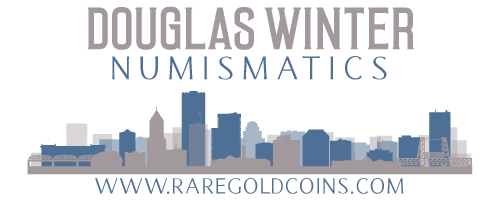Why Are Nice Coins So Hard to Find?
/When I'm at shows or talking to collectors and dealers over the phone, I hear a common refrain: nice coins are very hard to find. This appears to be the case in nearly all strongly collected series, be it Indian Cents, Civil War era gold or Morgan Dollars. I have a few theories about this which I'd like to share. The first is simple: not everyone has the same concept of what is a "nice" coin. I like dirty, original 18th and 19th century gold and a coin with the aesthetics that I find appealing is clearly not going to be the same for someone who likes coins that are bright and shiny.
I don't think the moaning about a lack of nice coins is new and I'm guessing that collectors in 1912 were complaining in some of the same ways that collectors in 2012 are.
Let me share a theory with you that is basically speculative but which I think has some real merit. As I have stated many times, grading is a continuum. A "grade" is actually a range which can be expansive. As an example, let's look at the MS63 grade.
Assuming that you agree that grading is a continuum, you'll agree with me that MS63 is actually a series of grades that begins with MS63.0 and ends with MS63.9. I would further describe these ranges as follows:
63.0-63.3: coins that are low end or which barely qualify as this grade. I estimate that for the typical series, around 40-45% of the MS63's fall into this range.
63.4-63.5: coins that are decent and which would easily re-grade as a 63 if resubmitted to PCGS or NGC. I estimate that for the typical series around 30-35% of the MS63's fall into this range.
63.6-63.8: coins that are high end for the grade and which are now (sometimes) designated as "+" or "*" coins by the services. I estimate that for the typical series maybe 10-15% of the MS63's fall into this range.
63.9: coins that are exceptional for the grade and which are almost assuredly going to upgrade to MS64 at some point. I estimate that for the typical series maybe 5% (and probably less) of the MS63's fall into this range.
If my theory is correct, this mean that at least 70-80% of all MS63 coins are below-average to average in quality. The best of these "average" coins (a coin that I regard as being a solid, commercial example) is likely to get strong consideration for approval at CAC but the majority of them will not be stickered. These not-so-great or just-OK coins are the ones that are generally seen on E-Bay or in Heritage sales, and these are what many collectors are exposed to on a regular basis.
So what about the 20-30% of the MS63's that range from being really nice to exceptional? Where are they and why are they so hard to find? I think the answer(s) are simple.
In many series, there is huge financial motivation to upgrade an MS63 to an MS64. As an example, an 1812 half eagle in MS63 is worth around $22,500-25,000; the same coin in an MS64 holder is worth $35,000-45,000. If I own an 1812 half eagle that I regard as a 63.7 or a 63.8, doesn't it seem obvious that I'm going to go to great lengths to get the coin in a 64 holder and possibly have a $10,000 to $20,000 pay day?
Which brings me to this point: virtually all the high end MS63 coins are in MS64 holders or trying to get there. The MS63+ coins (which translate to the 63.6 to 63.8 pieces described above) are therefore the best available coins and they are typically sold by good retail dealers to their best clients. The typical collector either never gets to see these PQ coins or if he does, often in an auction environment, he has to compete with sophisticated buyers of high end coins.
Another point: I think there are more high end coins around than most collectors (and dealers) realize. It's just that we don't see them as often and much of what we do see on a day-by-day or show-by-show basis is uninspiring.
Now that you've mulled over that theory, I have another one to share with you. Next time you wonder "where are all the nice coins" consider the following fuzzy math.
If a coin is 150 or so years old, it has been collectible for 100 or so years. If the typical coin is owned around five years (and yes I am aware that there are many coins that are in "strong hands" and don't trade until they are held for fifteen or twenty years) that means that the coin you just bought may have had as many as twenty previous owners.
Think about this: that means some or maybe even all of these twenty owners have shipped the coins through the mail in flimsy holders/cleaned the coins/mishandled the coins/stored the coins in PVC flips/stored them loose in cabinets/dipped them and forgot to rinse them/etc. For a coin in nearly any grade to have survived generations of overzealous collectors without having had something bad done to them...well, that just about boggles my mind. And that, in a nutshell, is another very good reason why nice coins are so hard to find.
Are you in the market for nice coins? Send me an email at dwn@ont.com and I will try to hook you up with some very nice coins for your collection!











